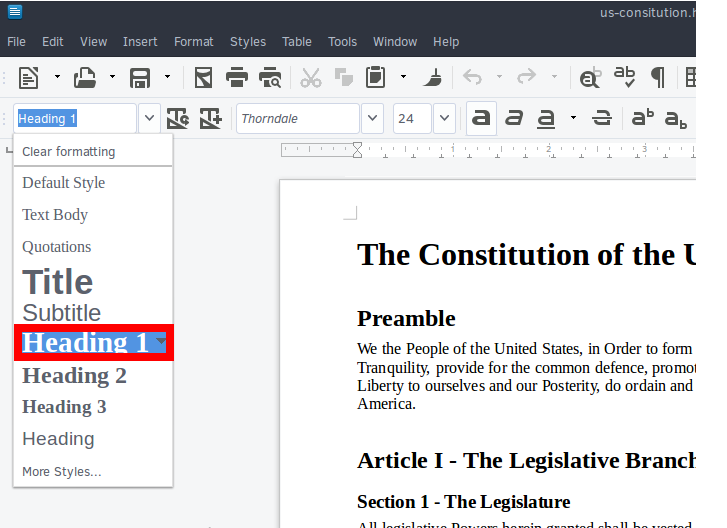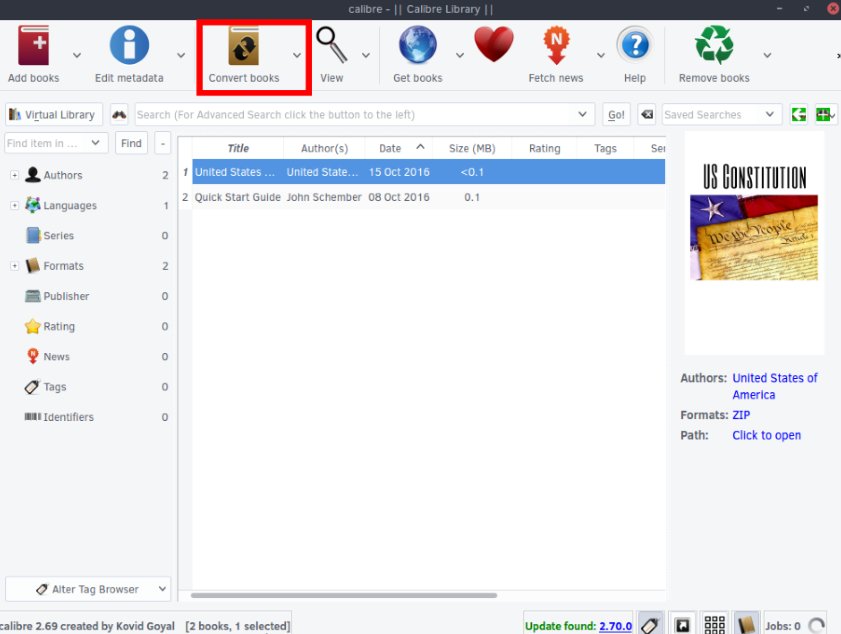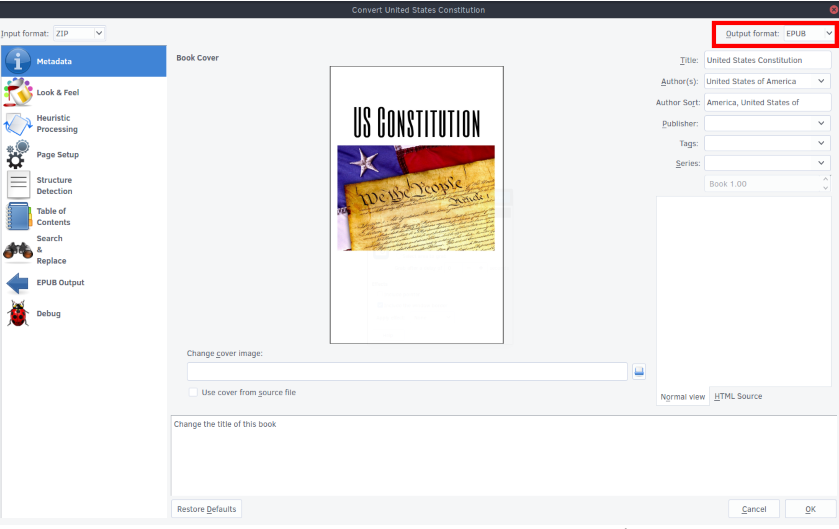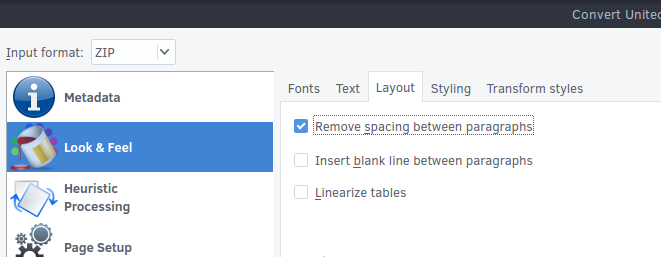Teach you how to use Caliber to create e-books on Linux
Since Amazon started selling e-books many years ago, e-books have grown by leaps and bounds and become more and more popular. The good news is that e-books are very easy to create using free and open source tools, and this beginner's guide tells you how to quickly create an e-book on Linux using the Caliber tool.
Create an e-book on Linux
To create an e-book, you'll probably need two pieces of software: a text processor (of course, I use LibreOffice) and Caliber. Caliber is an excellent e-book reader and e-book library program. You can use it to open ePub files or manage your collection of e-books on Linux. (LCTT translation annotation: LibreOffice is software used to process text on Linux, similar to Office software in Windows)
In addition to these software, you also need to prepare an e-book cover (1410×2250) and your original manuscript.
first step
First, you need to open your manuscript in your text processor program. Caliber can automatically create a book catalog for you. To use this feature, you need to set the heading style of each chapter in your manuscript to "Heading 1". To do this in LibreOffice, just highlight the heading and select "Heading 1" in the paragraph style drop-down box. That’s it.

If you want to have sub-chapters and want them to be added to the table of contents, just set the titles of these sub-chapters to Heading 2. After doing this, save your document as an HTML format file.
Second step
Within the Caliber program, click the "Add Book" button. After the dialog box appears, you can open the HTML format file you just saved and add it to Caliber.

third step
Once the HTML file is added to the Caliber library, select the new file and click the "Edit Metadata" button. Here, you can add the following information: title, author, cover image, description, and other information. When you're done filling it out, click "Ok."

the fourth step
Now click on the "Convert Books" button. In the new window, there will be some options here, but you won't need to use them.

In the selection box at the upper right of the new window, select the epub file format. Caliber also has other options for creating mobi file formats, but I find that things often happen after creating those files that I didn't expect.

the fifth step
In the new dialog box on the left, click "Appearance". Then check "Remove white space between paragraphs".

Next, we will create a content directory. If you don't plan to use a table of contents in your book, you can skip this step. Select the Content Directory tab. Next, click the magic wand icon to the right of "First-level Directory".

In this new window, select "h1" from the drop-down menu under "Match HTML tags." Click "OK" to close this window. If you have subsections, select "h2" under "Second level directory".

Before we start generating the e-book, choose to export the EPUB file. On this new page, select the "Insert Table of Contents" option.

Now all you need to do is click "OK" to start generating the e-book. Unless yours is a large file, the process of generating an e-book is usually completed quickly. At this point, you have created an e-book.
For some special users, such as those who know how to write CSS style files (LCTT translation annotation: CSS files can be used to beautify HTML pages), Caliber gives such users an option to add CSS styles to articles. Just go back to the Appearance section and select the Style tab option. But if you want to create a mobi format file, for some reasons, it cannot accept CSS style files.

Okay, does it feel very easy? I hope this tutorial helped you create ebooks on Linux.
The above is the detailed content of Teach you how to use Caliber to create e-books on Linux. For more information, please follow other related articles on the PHP Chinese website!

Hot AI Tools

Undresser.AI Undress
AI-powered app for creating realistic nude photos

AI Clothes Remover
Online AI tool for removing clothes from photos.

Undress AI Tool
Undress images for free

Clothoff.io
AI clothes remover

Video Face Swap
Swap faces in any video effortlessly with our completely free AI face swap tool!

Hot Article

Hot Tools

Notepad++7.3.1
Easy-to-use and free code editor

SublimeText3 Chinese version
Chinese version, very easy to use

Zend Studio 13.0.1
Powerful PHP integrated development environment

Dreamweaver CS6
Visual web development tools

SublimeText3 Mac version
God-level code editing software (SublimeText3)

Hot Topics
 What computer configuration is required for vscode
Apr 15, 2025 pm 09:48 PM
What computer configuration is required for vscode
Apr 15, 2025 pm 09:48 PM
VS Code system requirements: Operating system: Windows 10 and above, macOS 10.12 and above, Linux distribution processor: minimum 1.6 GHz, recommended 2.0 GHz and above memory: minimum 512 MB, recommended 4 GB and above storage space: minimum 250 MB, recommended 1 GB and above other requirements: stable network connection, Xorg/Wayland (Linux)
 Linux Architecture: Unveiling the 5 Basic Components
Apr 20, 2025 am 12:04 AM
Linux Architecture: Unveiling the 5 Basic Components
Apr 20, 2025 am 12:04 AM
The five basic components of the Linux system are: 1. Kernel, 2. System library, 3. System utilities, 4. Graphical user interface, 5. Applications. The kernel manages hardware resources, the system library provides precompiled functions, system utilities are used for system management, the GUI provides visual interaction, and applications use these components to implement functions.
 vscode terminal usage tutorial
Apr 15, 2025 pm 10:09 PM
vscode terminal usage tutorial
Apr 15, 2025 pm 10:09 PM
vscode built-in terminal is a development tool that allows running commands and scripts within the editor to simplify the development process. How to use vscode terminal: Open the terminal with the shortcut key (Ctrl/Cmd). Enter a command or run the script. Use hotkeys (such as Ctrl L to clear the terminal). Change the working directory (such as the cd command). Advanced features include debug mode, automatic code snippet completion, and interactive command history.
 How to check the warehouse address of git
Apr 17, 2025 pm 01:54 PM
How to check the warehouse address of git
Apr 17, 2025 pm 01:54 PM
To view the Git repository address, perform the following steps: 1. Open the command line and navigate to the repository directory; 2. Run the "git remote -v" command; 3. View the repository name in the output and its corresponding address.
 How to run java code in notepad
Apr 16, 2025 pm 07:39 PM
How to run java code in notepad
Apr 16, 2025 pm 07:39 PM
Although Notepad cannot run Java code directly, it can be achieved by using other tools: using the command line compiler (javac) to generate a bytecode file (filename.class). Use the Java interpreter (java) to interpret bytecode, execute the code, and output the result.
 Where to write code in vscode
Apr 15, 2025 pm 09:54 PM
Where to write code in vscode
Apr 15, 2025 pm 09:54 PM
Writing code in Visual Studio Code (VSCode) is simple and easy to use. Just install VSCode, create a project, select a language, create a file, write code, save and run it. The advantages of VSCode include cross-platform, free and open source, powerful features, rich extensions, and lightweight and fast.
 What is the main purpose of Linux?
Apr 16, 2025 am 12:19 AM
What is the main purpose of Linux?
Apr 16, 2025 am 12:19 AM
The main uses of Linux include: 1. Server operating system, 2. Embedded system, 3. Desktop operating system, 4. Development and testing environment. Linux excels in these areas, providing stability, security and efficient development tools.
 vscode terminal command cannot be used
Apr 15, 2025 pm 10:03 PM
vscode terminal command cannot be used
Apr 15, 2025 pm 10:03 PM
Causes and solutions for the VS Code terminal commands not available: The necessary tools are not installed (Windows: WSL; macOS: Xcode command line tools) Path configuration is wrong (add executable files to PATH environment variables) Permission issues (run VS Code as administrator) Firewall or proxy restrictions (check settings, unrestrictions) Terminal settings are incorrect (enable use of external terminals) VS Code installation is corrupt (reinstall or update) Terminal configuration is incompatible (try different terminal types or commands) Specific environment variables are missing (set necessary environment variables)






